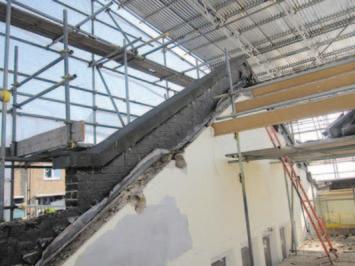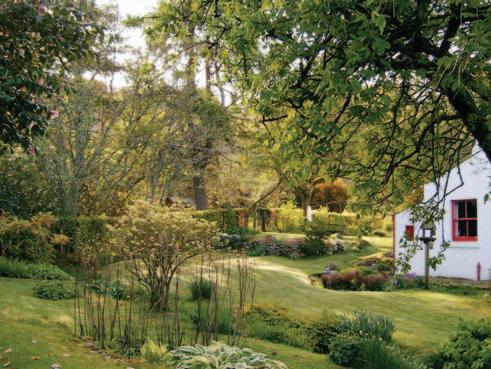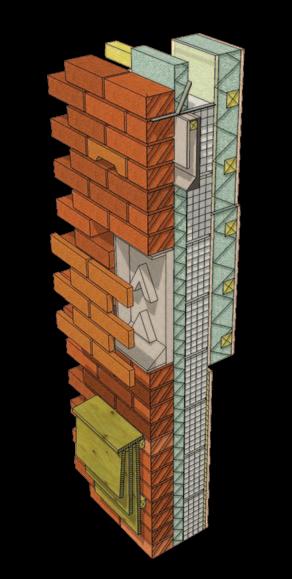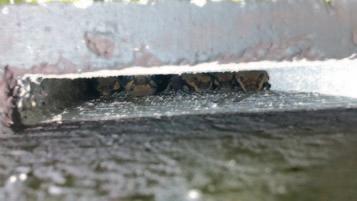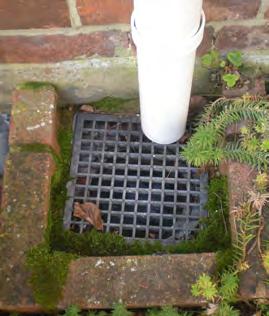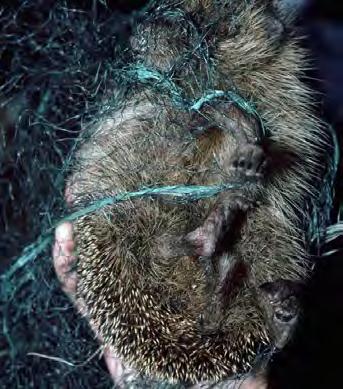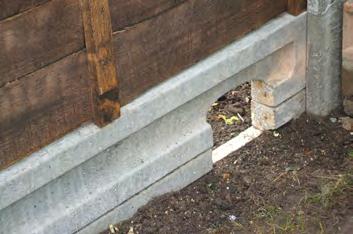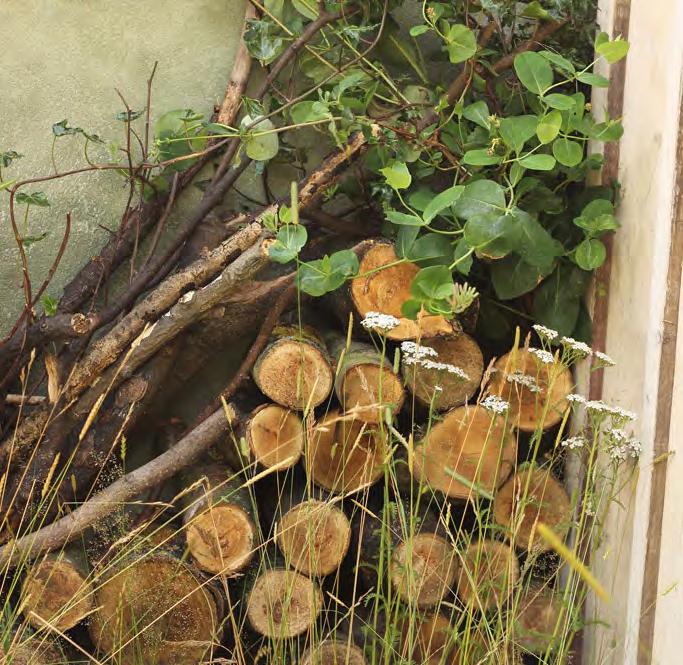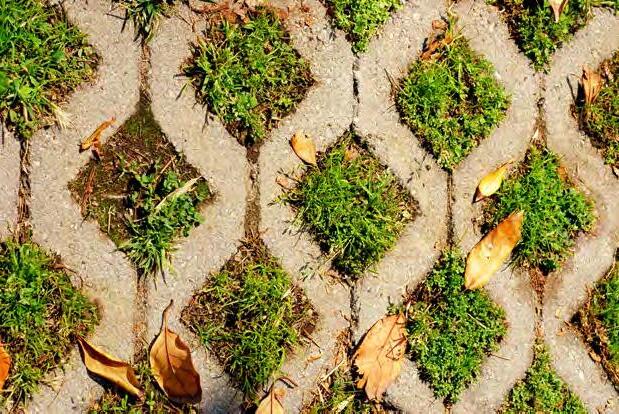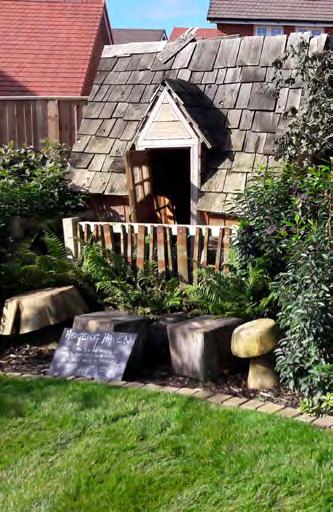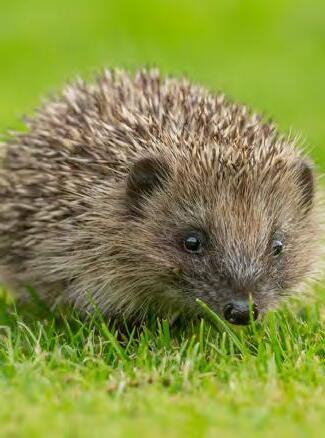The University of Winchester


Acknowledgements
Arcadian Ecology & Consulting Ltd were contracted by Anna Wyse, The University of Winchester to deliver this work The author would like to thank Anna Wyse for arranging and allowing access to conduct the survey work.
Publication Details
This document should be cited as: Jackson, S. (2021) Biodiversity Action Plan Update 2021. The University of Winchester. Arcadian Ecology & Consulting Ltd, Curdridge.
Arcadian Ecology & Consulting Ltd is a wholly owned subsidiary of Hampshire and Isle of Wight Wildlife Trust.
Maps reproduced under Ordnance Survey licence no. 100015632 with the permission of Her Majesty's Stationery Office, Crown Copyright 2021. Unauthorised reproduction infringes Copyright and may lead to prosecution or civil proceedings.
Front Cover: King Alfred Campus by Sarah Jackson
Published by:
Arcadian Ecology & Consulting Ltd.
Beechcroft House
Vicarage Lane
Curdridge
Hampshire
SO32 2DP
A company Ltd by guarantee & registered in England No. 10033962
All assessments and recommendations provided are based on the information available to Arcadian Ecology & Consulting Ltd (Arcadian Ecology), and Arcadian Ecology endeavours to ensure all advice is accurate and appropriate at the time of publication. However, it is the sole responsibility of the recipient to ensure that any actions they take are both legally and contractually compliant, and Arcadian Ecology does not accept responsibility or liability for any losses incurred or arising from the advice we provide
No part of this document may be reproduced without permission. Information contained in this report is intended for The University of Winchester Records of protected and notable species may be forwarded to relevant recording organisations with site names removed. All other information in this report should not be passed on to any third party without the express permission of The University of Winchester and Arcadian Ecology For information on how to obtain further copies of this document and accompanying data please contact Arcadian Ecology: arcadian@hiwwt.org.uk.
Document Control
Executive Summary
The University of Winchester commissioned Arcadian Ecology & Consulting Ltd to undertake a review of their existing Biodiversity Action Plan (BAP), and to update the plan following a biodiversity assessment of its grounds at King Alfred Campus, West Downs Campus and Bar End Sports Field.
An extended Phase 1 habitat survey was undertaken over 2 days to identify the key habitat types, the potential species they could support and to review progress towards actions in the current BAP
King Alfred Campus, West Downs and Bar End Sports Field are all primarily areas of amenity grassland, but are interspersed with habitats of higher ecological value such as wildflower meadows, hedgerows, scattered trees and ponds. Within the amenity grassland, areas have been left to grow, creating more structural diversity and wildlife interest.
The information gathered during surveys was used to create updated action tables for the individual campuses, and those to be implemented across the University.
Actions range from those maintaining or enhancing features that have already been created to benefit biodiversity such as the maintenance of hedges and in-filling of gaps; while others are new ideas or seeking opportunities to engage with students and/or the local community
By implementing the actions of the BAP the University will enhance the biodiversity of the campus as part of the University Environment Strategy and working towards a Green Flag award
1. INTRODUCTION
1.1. Background
Arcadian Ecology & Consulting Ltd (Arcadian Ecology) were appointed by The University of Winchester to undertake a review of the existing Biodiversity Action Plan (BAP), and to update the plan following a biodiversity assessment of its grounds at King Alfred Campus, West Downs Campus and Bar End Sports Field.
1.2. Site Description
The University of Winchester is situated in the heart of the city. It comprises two campuses: King Alfred Campus (SU 4714 2919) and West Downs Campus (SU 4684 2947); and the University sports field at Bar End (SU 4906 2862), and covers approximately 15.4 hectares (Map 1)
The campuses comprise a range of habitats including amenity grassland, rough grassland, wildflower meadows, formal planting, hedgerows, scattered trees, copse, ponds, buildings, hard standing and infrastructure, in an urban setting.
1.3. Remit and Scope of the Report
This report will assess the University’s progress towards the existing Biodiversity Action Plan (BAP), and its current ecological status, and make recommendations on how to improve the biodiversity of the University grounds through an updated BAP.
2. BIODIVERSITY AND LEGISLATION
There has been a notable increase in people’s engagement with the environment, recognising the immense pressure that the environment is under and the need to act before it is too late.
The State of Nature report 2013 identifies the biodiversity losses the UK has suffered, with over 60% of species having declined in the last 50 years (Burns et al. 2013). The latest State of Nature report, published in 2019, further highlights the declines in abundance with 13% of the 696 terrestrial and freshwater species within the indicator showing a significant decline since 1970, and 6% over the last 10 years; with more species having decreased (41%) than increased (26%) within the indicator since 1970, and 44% decreased and 36% increased in the last 10 years. Species distribution also decreased, by an average of 5% since 1970, and is 2% lower than 2005 (Hayhow et al. 2019)
The Aichi Biodiversity Targets were agreed by 196 countries under the Convention on Biological Diversity (CBD) in 2010. In March 2019, JNCC on behalf of Defra, assessed the UK’s performance and found that the UK had failed to meet 14 of the 19 targets assessed (House of Commons Environmental Audit Committee 2021).
It reported that the status of habitats and species has deteriorated and there has been a continued increase in the prevalence of invasive species, as well as a continued deterioration in the fish size classes in the North Sea and status of pollinating insects. There has also been a shortfall in the funding for biodiversity by government of 29% from £641 million to £456 million between 2012/13 and 2017/18 (House of Commons Environmental Audit Committee 2021).
In 2019, the Chartered Institute of Ecologists and Environmental Managers (CIEEM) declared a climate emergency and biodiversity crisis. This was a call to action for CIEEM members, governments and society to reduce greenhouse gas emissions through nature-based solutions, as the restoration of biodiversity can potentially mitigate the effects of climate change such as carbon sequestration by peat bogs (CIEEM 2019) Winchester City Council declared a climate emergency in June 2019, announcing its commitment to the council becoming carbon neutral by 2024 and its aim for the wider district by 2030 (Winchester City Council 2019); and the University of Winchester declared a climate emergency in September 2019, pledging to be carbon neutral by 2030 and a commitment to sustainability within all aspects of the university (University of Winchester 2019)
Action is being taking at many levels, through government legislation and policy, to more local initiatives such as the Hampshire & Isle of Wight Wildlife Trust’s Wilder 2030 strategy, an overview of some of these are detailed below.
2.1. Environment Act 2021
The Environment Act makes provision about targets, plans and policies:
• for improving the natural environment;
• for statements and reports about environmental protection;
• for the office for Environmental Protection;
• about waste and resource efficiency;
• about air quality;
• for the recall of products that fail to meet environmental standards;
• about water;
• about nature and biodiversity;
• for conservation convenants;
• about the regulation of chemicals; and
• for connected purposes
It will be key for the delivery of the government’s 25 Year Environment Plan and tackling the environmental and climate crises. It will set long-term and legally binding environmental targets (GOV.UK 2020)
2.1.1. 25 Year Environment Plan
The environment plan sets out goals for improving the environment within a generation, through improvement of air and water quality, and protection of plants, trees and wildlife.
Key areas of the plan are (including some, but not all, of the actions identified for achieving the goals):
• Clean air – including the reduction of emissions from five damaging air pollutants; and stopping the sale of conventional petrol and diesel cars and vans by 2040
• Clean and plentiful water – including a reduction in damaging abstraction from rivers and groundwater; reduction in water leakage; and minimising harmful bacteria in designated bathing waters.
• Thriving plants and wildlife – including the reserve of loss of marine biodiversity; increase in proportion of protected marine sites; restoring 75% of terrestrial and freshwater protected sites to favourable condition; creating or restoring 500,000 hectares of wildlife-rich habitat outside the protected sites network; increasing woodland in England.
• Reducing the risks of harm from environmental hazards – including making sure everyone has access to information to assess risk to lives and livelihoods from flooding and coastal erosion; and ensuring decisions on land, including development, reflect current and future flood risk
• Using resources from nature more sustainably and efficiently – including maximising the value and benefits we get from resources; improving our approach to soil management; ensuring fish stocks are recovered and maintained at levels that can produce maximum sustainable yield; and ensuring the food is produced sustainably and profitably.
• Enhancing beauty, heritage and engagement with the natural environment – including the safeguarding and enhancement of the beauty of our natural scenery; ensuring there are high quality, accessible, natural spaces close to where people live and work; and increasing action to improve the environment from all sectors of society.
• Mitigating and adapting to climate change – including the continued cutting of greenhouse gas emissions.
• Minimising waste – including working towards zero avoidable waste by 2050; eliminating avoidable plastic waste by 2042; and significantly reducing marine plastic pollution.
• Managing exposure to chemicals
• Enhancing biosecurity – including the management and reduction of the impact of existing plant and animal diseases, lowering the risk of new ones and tackling invasive, non-native species; and ensuring strong biosecurity protection at our borders.
2.1.2. Nature Recovery Network
The Nature Recovery Network (NRN) is part of the 25 year Environment Plan. The NRN will be a national network of wildlife-rich places to increase and restore nature, with Defra and Natural England leading to bring together partners, legislation and funding to create the network which will restore and enhance England’s wildlife-rich places (GOV.UK 2020)
2.1.3. Biodiversity Net Gain
A biodiversity metric has been created to use habitats to assess the wildlife value of an area. Biodiversity Net Gain is to be included in the new Environment Bill, making in a mandatory condition for planning permission. The target for net gain can vary across the country / planning authorities, but a 10% biodiversity net gain is most widely adopted (GOV.UK 2021).
2.2. Pledges and Initiatives
2.2.1. 30x30
The 30x30 commitment aims to protect 30% of land and sea around the world by 2030. It is a pledge by political leaders from 64 countries to reverse biodiversity loss. The UK government announced at the same time their commitment to protect 30% of the UK’s land for biodiversity by 2030 (GOV.UK 2021).
The Wildlife Trusts are also running a fundraising appeal ’30 by 30’ to generate funds to start the process of nature’s recovery across 30% of land and sea by 2030 (The Wildlife Trusts 2021).
2.2.2. Wilder 2030
Hampshire & Isle of Wight Wildlife Trust’s 10 year strategy to create a much wilder Hampshire & Isle of Wight, with nature’s recovery at the forefront of tackling the climate crisis, restoration of broken ecosystems and the return of missing wildlife; and people to benefit from a healthy natural environment (Hampshire & Isle of Wight Wildlife Trust 2019)
This will be achieved through two key programmes:
• Team Wilder: more people on nature’s side
1 in 4 people connecting with wildlife and taking action for nature’s recovery.
• Wilder Land & Sea: more space for nature to thrive – at least a third of land and sea to be wilder and where wildlife is recovering; pressure on nature reduced everywhere else; and nature recovering, ecosystems restored and wildlife returning.
2.2.3. Rewilding
Rewilding is the large-scale restoration of ecosystems, allowing nature to take back control and natural processes to prevail. It is a minimal intervention approach which allows the landscape to evolve and return to a more natural state. It allows ecosystems to provide natural functions for the benefit of people (ecosystem services) such as carbon sequestration, natural flood management and nitrate reduction. It also provides the opportunity to re-introduce missing species, such as beaver.
2.3. Planning & Biodiversity
Biodiversity is a key consideration in local decision making. Newly built and renovation plans for buildings within The University of Winchester should take the following into consideration.
The National Planning Policy Framework (NPPF) sets out the Government’s requirements for the planning system and the development of local and neighbourhood plans. It sets out the purpose of the planning system; to achieve sustainable development through 3 key areas; economic, social and environmental. The environmental strand includes the protection and enhancement of the natural environment and improving biodiversity.
The NPPF highlights key points for consideration in relation to green space and biodiversity:
- the promotion of healthy communities requiring access to high quality open spaces including the ability to designate land as Local Green Space;
- the protection of green belt land to assist in safeguarding the countryside from encroachment, prevent neighbouring towns merging, preserve the setting and character of historic towns, assist in urban regeneration and to check the unrestricted sprawl of large built-up areas; and
- conserving and enhancing the natural environment through protection of valued landscapes, recognition of the benefits of ecosystem services, minimising impacts on biodiversity and providing net gains where possible.
The section on conserving and enhancing the natural environment was updated in July 2021 The key addition relevant to the University of Winchester is in paragraph 175, part D, which in addition to the supporting of developments whose primary objective is to conserve or enhance biodiversity which was already present in the NPPF, has added that “opportunities to improve biodiversity in and around developments should be integrated as part of their design, especially where this can secure measurable net gains for biodiversity or enhance public access to nature where this is appropriate.” (Freeths 2021)
Hampshire Ecological Network Map has been completed under the requirement of the National Planning Policy Framework for all local planning authorities to map and consider ecological networks within their plans, policies and procedures. The mapping identifies core statutory sites (broadly those with international or national levels of designation), core non-statutory (namely locally designated sites and priority habitats) and network opportunity sites (those with potential to be enhanced for the benefit of wildlife) It aims to improve and extend existing wildlife sites, improve habitat connectivity, create new sites and reduce pressure on wildlife through improvement of the wider environment (HBIC 2020)
2.3.1. Building with Nature
Building with Nature is a set of standards, supported by best practice guidance, that enables planners and developers to deliver high-quality green infrastructure. The standards provide an evidencebased, how-to, guide on delivering high-quality green infrastructure.
2.4. Legal context for Protection of Biodiversity
2.4.1. The Conservation of Habitats and Species (Amendment)(EU Exit) Regulations 2019
This regulations state that:
“Where impacts cannot be avoided or satisfactorily reduced/mitigated, the competent authority will need to ascertain that the plan or project will not have a negative impact on the designated site populations, which would otherwise constitute an adverse effect on the integrity of the international site as a whole. “
The University of Winchester has one site designated for its international and European conservation importance less than 500 metres from Bar End Sports Field and under 1km from King Alfred campus, the River Itchen SAC.
European designated sites are the Special Areas of Conservation (SAC), Special Protection areas (SPA) and Ramsar sites (areas of international wetland importance), designated before 31 December 2020, collectively known as the National Site Network. These designations all have implications for local decision making and special care must be taken to ensure decisions and plans do not adversely impact on these sites, the species or features for which they have been designated.
The ecological and chemical quality for the River Itchen has been assessed as part of on-going monitoring linked to the water framework directive The most recent data available is for 2019, which classified the river overall as moderate, being good for ecological elements but failing on chemical, due to presence of priority hazardous substances (EA 2021)
The Natural Environment and Rural Communities (NERC) Act 2006 requires every local authority to have regard to conserving biodiversity in the execution of their functions. Section 41 of the act lists 65 priority habitats and 1150 priority species, all of which are identified on the ‘UK Post-2010 Biodiversity Framework’ which succeeded the UK Biodiversity Action Plan, which should be taken into consideration by local authorities when implementing their duty under the NERC Act.
3. REVIEW OF PROGRESS
The University of Winchester Biodiversity Action Plan was written in 2012, with a review and update in 2021. The following sections detail the progress towards the actions following meetings and a site visit in June 2021, with the progress from 2016 also included for reference (grey boxes indicate it was new action in 2016).
3.1. King Alfred Campus
Maintain green roofs
Maintain wildflower areas
Develop suitable sustainable watering regime
Appropriate management of wildflower areas by Stripe, KKB and Holm lodge
Retain longer grass in front of St Elizabeth’s Hall to protect White Helleborine
Enhance green wall Plant in spaces on green wall
Productive green roof providing additional space for wildlife
Productive wildflower areas
Food source and shelter for invertebrates
Protection of native species
Opportunity for other dormant species in seed bank to grow
Food source and shelter for invertebrates and birds
Complete. Some additional planting may be required to fill in gaps
Green roof was flourishing at time of survey
Flower rich areas present with lots of invertebrates observed
Mowing regime has been relaxed, allowing grass and herbs to grow
Creation of sensory garden at Queens Road halls
Doing well, but still some gaps
Good coverage over wall
Student and staff engagement
Create practical task list for EnvSoc/staff
Food source for invertebrates especially bees and butterflies
Area for students to relax and engage with nature
Increased engagement and sense of ownership of green spaces on university campus
Rolling programme of tasks for EnvSoc
Action has not been progressed as no suitable areas. Medecroft as alternative
EnvSoc no longer exists but possibility to engage with Sustainability Society
Create native chalk grassland
On steep slopes create areas of chalk grassland
Native habitat in-keeping with local area
No progress Potential site south of Alwyn Hall has been identified
Reduction of mowing and less students on site has resulted in species naturally occurring, including a number of orchids
Provision of continual food sources for wildlife
Appropriate species planting to habitats and landscape
Connected habitats to aid movement of wildlife through the landscape
Mixed planting and relaxed mowing regime benefitting a range of species. When doing replacement planting will take opportunity to include different, appropriate species.
New planting of trees and shrub species, and removal of some saplings.
Monitoring
of bat boxes Increased
Wildlife sensitive lighting Bats not dissuaded from using areas due to lighting regime
Hedgehogs able to move around the landscape
Hooded/cowled lighting installed
Create holes in fence along southern boundary of site for hedgehogs
Part of a national scheme ‘Hedgehog Street’ www.hedgehogstreet.org
Opportunity for engagement with neighbours and local community
Holes present along fence line. Hedgehogs using copse on KAC. Hedgehog initiative, including surveys by staff and students. Silver Award for hedgehog friendly campus from the British Hedgehog Preservation Society and currently working towards gold award
Retain and protect space for wildlife
Develop ecotones along parts of the hedge lines in The Dytche
Increased cover for invertebrates and small mammals
Food source for invertebrates, birds and small mammals
Areas left longer creating a transition between the short grass and hedges
Increased standing dead wood on campus
Retain and protect current swift nest holes in Main Building
Ensure building works and routine maintenance do not block holes or disturb birds during breeding season (April-August)
Identify new areas with potential to support nests for swifts (and other species)
Liaise with Estates Projects Team and Maintenance Team
Retention of trees as habitat for invertebrates, birds and bats
Identified as and when appropriate
Holes retained as usable nest sites
Habitat provision for breeding swifts
Limited knowledge of existing BAP within university.
Will arrange talks with grounds and maintenance teams on completion of BAP 2021 review and update.
Maintain wildlife ponds
Regular and appropriate maintenance of ponds and surrounding vegetation
Increased habitat for amphibians, reptiles, dragonflies and damselflies
Some evidence of pond drying due to encroachment of surrounding vegetation and choking with duckweed
3.2. West Downs Campus
Inclusion of wildlife features on new building (WD1)
Wildlife / biodiversity enhancements included on new building
Compensation for habitats lost to development footprint
Increased space for wildlife
Features for bats and swifts included in design of new building
Develop understorey amongst boundary trees
Appropriate management of limited green spaces
Prune trees to allow more light to reach ground and understorey to develop
Increased diversity of habitats
Not really managed except when requested by neighbours
Only grass and nettles currently present
Planting still ad hoc in cosmic garden. Need co-ordinated approach with all interested parties
Boundary only cut once a year which has benefitted species such as hedgehog and slow worms
Maintain butterfly garden
Coherent approach to management of cosmic garden
Wildlife friendly area meeting all the demands of interested parties
Suggestion of bog garden for 2017
Plans for planting need to fit with research project (through time)
Planting still ad hoc in cosmic garden. Need co-ordinated approach with all interested parties
Appropriate management of butterfly garden
Productive wildflower areas
Food source and shelter for invertebrates
Established butterfly garden attracting bees and butterflies
Stag beetle piles in butterfly garden
Flower rich butterfly garden supporting lots of invertebrates.
More planting to occur this autumn to extend flowering period.
Provision of more space for wildlife
Monitoring of bat boxes
Not occurred
Remove non-native species
Creation of a wildlife pond
Create holes in fence along northern boundary of site for hedgehogs
Hedgehogs able to move around the landscape
Part of a national scheme ‘Hedgehog Street’ www.hedgehogstreet.org
Opportunity for engagement with neighbours and local community
Gaps present under fence, but no specific holes located
Increased standing dead wood on campus
Retention of trees as habitat for invertebrates, birds and bats
Standing dead wood left as and when opportunities arise
Reduce mowing regime behind hedge on eastern boundary
Remove pampas and bamboo from cosmic garden
Create wildlife pond in cosmic garden
Increased cover for invertebrates and small mammals
Food source for invertebrates, birds and small mammals
Invasive, non-native species removed from site
Increased habitat for amphibians, reptiles, dragonflies and damselflies
Area has been left to grow
Still present (bamboo)
Pond created in cosmic garden
3.3. Bar End Sports Field
Maintain ephemeral pools
Maintain pools to allow smaller, pioneer species to grow
Installation of bat boxes on trees
Installation of swift box
Variety of habitat types for a range of invertebrates
Mowing to retain short and long areas of vegetation
Increased roosting provision for bats No bat boxes present
Increased nesting provision for swifts
Mowing to retain short and long areas of vegetation
Provision of more space for wildlife
Develop ecotones along northern boundary
Increased cover for invertebrates and small mammals
Food source for invertebrates, birds and small mammals
More areas of long grass present. Still short to base of hedge around car park.
3.4. Campus Wide Actions
Increased engagement and sense of ownership of green spaces on university campus
Student and staff engagement
Develop EnvSoc survey skills to monitor campus
Rolling programme of tasks and skill development opportunities for EnvSoc
Records contributing to local and national databases
Reduced risk of committing an offence
Not progressed at EnvSoc no longer present but to be taken forwards as Sustainability Society
Create ecotones
Provision of food sources for wildlife
Engage with estates and maintenance team to make them aware of biodiversity and legislation relevant to campus
Put out camera traps around campus and post footage on university website
All staff working on grounds aware of potential species issues
Biodiversity protected on campus
Insight into natural world, foster appreciation of biodiversity actions
No formal training has been given, but general awareness by some team members and toolbox talk to be arranged
Hedgehog surveys have been undertaken, including use of camera trapping
Reduce management around hedge bases to soften edges and vary structure
Increased cover for invertebrates and small mammals
Food source for invertebrates, birds and small mammals
Mowing has been reduced across the campus creating more varied structure and connectivity
Appropriate species planting to habitats and landscape
Bat friendly species planting
Connected habitats to aid movement of wildlife through the landscape
Increased food sources for night flying insects
Range of species planting and natural colonisation has occurred on campus
Species including star jasmine and longer grassland supporting invertebrate prey
Inclusion of wildlife features on new buildings
Wildlife / biodiversity enhancements included on new buildings
Compensation for habitats lost to development footprint
Increased space for wildlife
Features included on new West Downs building
Valuing biodiversity
Undertake an ecosystem services assessment of the campus
Provides ‘value’ to the campus
Opportunity to engage with whole university
Not occurred
4. CURRENT STATUS OF BIODIVERSITY
The current status of biodiversity at The University of Winchester has been assessed by undertaking a botanical survey, to establish the habitats and likely species present on the site.
Whilst this method will not capture everything present, it will give an indication of the current biodiversity interest of the University, and highlight areas for improvement for inclusion in the action plan.
4.1. Methodology
An extended Phase 1 habitat survey was conducted on 29th and 30th June 2021 by Sarah Jackson (MCIEEM) of Arcadian Ecology & Consulting Ltd.
The Joint Nature Conservation Committee (JNCC) methodology for Phase 1 habitat survey was followed (Joint Nature Conservation Committee, 2010). A walkover survey of the site was undertaken, with areas classified and mapped using a standard set of colours on a Phase 1 Habitat Map to indicate the habitat types present. For each different habitat type a species list was compiled, with particular reference to protected, notable or BAP species; this list will not give every species found on the site, but will give a representation of the diversity, significance, and dominance of plant species found within each habitat type. The location of descriptions relating to specific areas and features of interest or note were annotated on the Phase 1 Habitat Map using Target Notes.
Plant nomenclature in this report follows Rose (1989; 2006) for native and naturalised species of vascular plant. Plant names in the text are given with the common names first, followed by the scientific name in italics. Where there is a degree of doubt in the identification of a plant, ‘cf.’ precedes the specific epithet to signify the plant is very probably the species indicated, but it was not possible to distinguish it from similar members of the genus with certainty.
4.1.1. Constraints to Survey
There is extensive ornamental / garden planting on site, these species have not been identified due to the many variants.
Some areas are very short mown, species identification was undertaken, but it was not possible to identify all species due to only small fragments of plants being visible.
Species that readily hybridise, such as lime and willow, have only been identified to genus level.
4.2. Results Habitats
There are a range of habitats present at The University of Winchester. The most dominant habitats, amenity grassland and buildings/hard standing, are of limited ecological value, however the areas of wildflowers, hedgerows, ponds and trees create diversity on the campus enable it to support a range of species. Within the areas of amenity grassland, some areas have been left to grow, providing more structural diversity and allowing herbs to flower amongst the grasses, increasing their ecological value. Areas of wildflower planting are also present on King Alfred Campus, such as the banks by The Dytche and around the ponds, and the butterfly garden at West Down, with a notable abundance of invertebrate species present in these areas.
Protected and Notable Species
No protected or notable species were recorded during the Phase 1 habitat survey. However, based on the habitat types and features identified at the site, it is considered that the site has the potential to support common amphibians, common bat species, small mammals, birds, including swifts, and common and widespread invertebrates, with opportunities for badgers and widespread reptiles.
Biodiversity Action Plan Update 2021: The University of Winchester
A number of invertebrates were observed or heard during the survey including marbled white and meadow brown butterflies, white ermine moth, burnet moth, red-tailed bumblebee, white-tailed bumblebee, hoverflies and grasshoppers.
A roe deer and fawn were also seen towards the Queen’s Road halls on King Alfred Campus.
Conclusion
The University of Winchester campuses have a range of habitats, with linked areas of green space within the campus and to the wider landscape offering opportunities for species to move around the landscape. Whilst many of the high ecological value habitats are not extensive, they offer important space for foraging and shelter, particularly for invertebrates, which in turn provides a food source for bats and birds known to be on site.
Further enhancements to the campuses could be made, with more detail included in the biodiversity action tables.
A species list created during site visits conducted in June 2021 is provided in Appendix 1
5. ACTION TABLE
Based on the results of the extended Phase 1 survey and discussion with university staff, suitable actions have been developed that will improve the biodiversity interest of The University of Winchester campus. Actions are focussed on providing a connected space for wildlife at the University in a local context.
Some of the actions listed are already underway; others are potential projects, while others are aspirational, they represent ideal actions given sufficient resources and time. The actions listed represent the current priorities. Priorities will, however, change for many reasons, hence the need for regular review of this BAP.
The action tables have been divided into those for King Alfred Campus, West Downs Campus, Bar End Sports Fields and Wider Campus, for those actions that are not location specific.
Each action table is divided into 5 main columns; Objective, Action, Outcome, Targets and Reporting Method. Objectives are the overall aim of undertaking the action, actions are the key activities that need to be undertaken, outcomes are the benefits to biodiversity that will be achieved, the targets are the steps that need to be fulfilled by the end of the stated years, and the reporting method identifies how progress towards the final objective is going to be monitored. Some targets also include management suggestions on how best to achieve the target, these should be incorporated into the estates management plans for the sites.
5.1. King Alfred Campus: Action Table and Map
Maintain green roofs Maintain suitable sustainable watering and management regime
Maintain wildflower areas
Appropriate management of wildflower areas by Stripe, KKB and Holm lodge
Productive green roof
Flourishing, selfsustaining green roofs
Annual biodiversity check
Productive wildflower areas
Food source and shelter for invertebrates
Areas retained for over-wintering invertebrates and seed source for birds
Areas retained for over-wintering invertebrates and seed source for birds
Areas retained for over-wintering invertebrates and seed source for birds
Continue to maintain longer grass in front of St Elizabeth’s Hall to protect white Helleborine and on slopes
Protection of native species
Opportunity for other dormant species in seed bank to grow
Management: Cut each autumn, but retaining an area of approximately 25% uncut
Reduce mowing frequency with no mowing around area of White Helleborine during growth and flowering period
(Approximately April to June but look for stems appearing)
Do not mow area until White Helleborine has set seed
Management: Cut each autumn, but retaining an area of approximately 25% uncut
Reduce mowing frequency with no mowing around area of White Helleborine during growth and flowering period (Approximately April to June but look for stems appearing)
Do not mow area until White Helleborine has set seed
Management: Cut each autumn, but retaining an area of approximately 25% uncut
Reduce mowing frequency with no mowing around area of White Helleborine during growth and flowering period (Approximately April to June but look for stems appearing)
Do not mow area until White Helleborine has set seed
Annual biodiversity check Butterfly and bumblebee survey
Annual biodiversity check
Monitor bamboo at base of green wall
Student and staff engagement
Ensure non-native species doesn’t become dominate
Area not dominated by one species of low ecological value
Create practical task list for students/staff Increased engagement and sense of ownership of green spaces on university campus
Link with Sustainability Society
Clear dominant ground flora in copse Management: Clear sycamore saplings and some ivy to allow woodland flora to develop in copse area
Species diverse green wall Annual biodiversity check
Wildlife pond maintenance
Management: Clearing vegetation in ponds in autumn (max of a quarter to a third at a time) and leave material on bank for at least 24 hours so any wildlife in removed material can get back in to pond if required. Every 1 to 2 years.
University Internet / social media page
Hold a Biodiversity Week Opportunity for staff and students to get involved with surveying on site
Hold a biodiversity week with opportunities to join bat walk, moth trapping surveys and hedgehog surveys
University Internet / social media page Greenhouse for students Increased engagement and sense of ownership
Sustainable food production
Install greenhouse to encourage students to ‘grow their own’
Students to look for grant opportunities to fund purchase
Annual biodiversity check
Provision of continual food sources for wildlife
Appropriate species planting to habitats and landscape
Connected habitats to aid movement of wildlife through the landscape
Encourage growth of native woodland flora in copse to provide Spring flowering species.
Management: Remove pines and sycamore saplings, coppice hazel and remove dead limbs to encourage growth of ground flora, allowing more light to ground. Use cut material for log pile within copse.
Management: If native species of ground flora not present, plant with locally sourced species such as bluebell, wood anemone, primrose, and snowdrop
Annual biodiversity check
Provision of more space for wildlife
Monitoring and installation of bat boxes
Increased roosting provision for bats Check boxes and if not being used, site in a different location
Wildlife sensitive lighting Bats not dissuaded from using areas due to lighting regime
Install bat box with camera Bat box check
Check for spill from lighting along southern boundary of campus, and install cowls/hoods to direct light down if necessary so dark areas for foraging and commuting bats
Annual biodiversity check
Retention/maintenance of holes fence along southern boundary of site for hedgehogs
Hedgehogs able to move around the landscape Hedgehog friendly campus
Opportunity for engagement with neighbours and local community
Retain/maintain holes in boundary fences, particularly if fences are repaired / replaced
Retain/maintain holes in boundary fences, particularly if fences are repaired / replaced
Retain/maintain holes in boundary fences, particularly if fences are repaired / replaced
Annual biodiversity check
Shade tolerant / woodland planting at Holm Lodge
Shelter and food source for invertebrates
Plant under trees and by wall to entrance of Holm Lodge where it is currently heavily shaded bare ground
Planters on roof of terrace with herbs, salad and vegetables as part of ‘Edible Winchester’
Link with local initiative ‘Incredible Edible Winchester’ https://www.winacc.org.uk/aboutus/action-groups/incredibleedible/
Example of sustainable, seasonal food production for staff, students and local community
Install and plant up planters (based on load bearing restrictions). Encourage staff and/or students to take on maintenance and using items grown (as per allotments at Holm Lodge)
Install bird drinker/bath
More native climbers on walls around Queen’s Road Halls
Increased pollen and nectar sources for invertebrates
Plant native species of climber in any gaps on walls of terrace between buildings
Annual Biodiversity Check
Annual biodiversity check
Annual biodiversity check
Maintain ecotones along parts of the hedge lines in The Dytche
Increased cover for invertebrates and small mammals
Food source for invertebrates, birds and small mammals
Continue reduced mowing frequency along select parts of the hedge to develop gradient in vegetation from hedge into tall ruderals, herbs, long grass and amenity grassland.
Consider planting of small shrubs or tall wildflowers to create a more diverse species and structure within ecotone
Annual biodiversity check
Increased native species within boundary of Medecroft
Increased cover, food and nesting opportunities for birds, invertebrates, bats and small mammals
Any new or replacement planting using native fruit, seed and nut producing species Include sensory planting within and around new allotments
Increased standing dead wood on campus
Retention of trees as habitat for invertebrates, birds and bats
Any trees identified as hazardous retained as monoliths if safe to do so
Management: Additional holes drilled to create cavities and stimulate rotting
Annual biodiversity check
Annual biodiversity check
Retain and protect space for wildlife
Retain and protect current swift nest holes in Main Building
Ensure building works and routine maintenance do not block holes or disturb birds during breeding season (April-August)
Identify new areas with potential to support nests for swifts (and other species)
Liaise with Estates Projects Team and Maintenance Team
Holes retained as usable nest sites
Habitat provision for breeding swifts
Active swift nest site(s) identified
Link with Swift Society to check boxes
Estates Projects Team and Maintenance Team up-to-date on location of nest site(s) and restrictions to works
Estates Projects Team and Maintenance Team up-to-date on location of nest site(s) and restrictions to works
Estates Projects Team and Maintenance Team up-to-date on location of nest site(s) and restrictions to works
Estates Projects Team and Maintenance Team work plans
Maintain wildlife ponds Regular and appropriate maintenance of ponds and surrounding vegetation Include wildlife ramps where required
Increased habitat for amphibians, reptiles, dragonflies and damselflies
Pond with range of invertebrates & established vegetation. Install wildlife ramp or stepping stones where required
Management: Pond vegetation should be thinned or seed heads cut before ripening to prevent one species becoming dominate. Never remove all plants at the same time (including vegetation surrounding the ponds) to ensure some cover is always present for wildlife.
Maintain insect hotel by pond on main campus –replace with new woody material
Pond with a diversity of species including invertebrates, amphibians & plants.
Annual biodiversity check

5.2. West Downs Campus: Action Table and Map
OBJECTIVE ACTION
Maintain understorey amongst boundary trees
OUTCOME
Prune trees to allow more light to reach ground and understorey to develop. Reduce management frequency.
1- 2
Increased diversity of habitats Trees pruned to create some lighter areas
TARGET (YEARS)
3 – 5
Understorey developing. Planting may be required if not occurring naturally e.g. honeysuckle, holly, hazel
6 – 10
REPORTING
METHOD
‘Layers’ within woodland Annual biodiversity check
Appropriate management of limited green spaces
Coherent approach to management of cosmic garden
Maintain butterfly garden Appropriate management of butterfly garden
Wildlife friendly area meeting all the demands of interested parties
Productive wildflower areas
Food source and shelter for invertebrates
Meeting to discuss “vision” for area
Area meeting targets for all interested parties
Annual biodiversity check
Areas retained for over-wintering invertebrates and seed source for birds
Increase species diversity to extend flowering season
Management: Cut each autumn, but retaining an area of approximately 25% uncut
Provision of more space for wildlife
Monitoring of bat boxes
Increased roosting provision for bats
Check bat boxes and move to new location if not being used
Annual biodiversity check Butterfly and bumblebee survey
Bat box check
Increased standing dead wood on campus
Retention of trees as habitat for invertebrates, birds and bats
Any trees identified as hazardous retained as monoliths if safe to do so
Re-use cut material to create partially buried habitat piles in semishaded areas
Management: Additional holes drilled to create cavities and stimulate rotting
Annual biodiversity check
Continue reduced mowing regime behind hedge on eastern boundary
Increased cover for invertebrates and small mammals
Food source for invertebrates, birds and small mammals
Continue reduced mowing frequency behind hedge on eastern boundary
Continue reduced mowing frequency behind hedge on eastern boundary
Continue reduced mowing frequency behind hedge on eastern boundary
Annual biodiversity check
Monitor non-native species Monitor to ensure pampas and bamboo does not spread in cosmic garden
Invasive, non-native species controlled Monitor extent of pampas and bamboo, and manage if spreading
Annual biodiversity check
Maintenance of wildlife pond Maintain wildlife pond in cosmic garden
Increased habitat for amphibians, reptiles, dragonflies and damselflies
Pond with range of invertebrates & established vegetation.
Pond with a diversity of species including invertebrates, amphibians & plants.
Annual biodiversity check
Management: Pond vegetation should be thinned or seed heads cut before ripening to prevent one species becoming dominate. Never remove all plants at the same time to ensure some cover is always present for wildlife.
Management: Pond with a diversity of species including invertebrates, amphibians & plants.

5.3. Bar End Sports Field: Action Table and Map
OBJECTIVE ACTION
Maintain ephemeral pools
Maintain pools to allow smaller, pioneer species to grow
OUTCOME
Variety of habitat types for a range of invertebrates
1- 2
Continue to manage ephemeral pools, including short mown areas for pioneer species in base of pool.
Manage through scything or mowing.
TARGET (YEARS) REPORTING
3 – 5
Continue to manage ephemeral pools, including short mown areas for pioneer species in base of pool
6 – 10
Continue to manage ephemeral pools, including short mown areas for pioneer species in base of pool
METHOD
Annual biodiversity check
Provision of more space for wildlife
Installation of bat boxes on trees Increased roosting provision for bats
Engagement with Allotment Society to make boxes
Installation of swift boxes Increased nesting provision for swifts
Engagement with Allotment Society to make boxes
Staff and student engagement through camera footage
Install beehives Sustainable food production
Opportunity for community engagement – demonstration of utilising any green space
Erection of at least 2 bat boxes on trees on southern boundary
If bat boxes not being used by year 5, site in a different location
Bat box check
Erection of swift box on building, possibly install one with camera and have live feed to university webpage / social media
Install beehives by ephemeral pools
Engage with Winchester Bee Keeping Society
Bird box check University social media
Honey production
Continue reduced cutting frequency of northern hedge
Food source for invertebrates, birds and small mammals
Allow top of hedge to grow Annual biodiversity check
Increase species diversity in long grass
More flowering plants and extended season providing pollen and nectar sources for invertebrates
Planting to increase species diversity in areas of long grass
Annual biodiversity check
Develop ecotones along northern boundary
Increased cover for invertebrates and small mammals
Food source for invertebrates, birds and small mammals
Retain strip of longer vegetation against base of hedge
Annual biodiversity check

5.4. Wider Campus: Action Table
Student and staff engagement Develop student / staff survey skills to monitor campus
Increased engagement and sense of ownership of green spaces on university campus
Rolling programme of tasks and skill development opportunities Records contributing to local and national databases
1- 2
Training in species surveys e.g. butterflies, bumblebees and small mammal trapping
Join in national monitoring schemes e.g. swift monitoring survey
Use ‘iRecord’ to record species on campus and contribute to county records
TARGET (YEARS)
3 – 5
Hold fundraising event to buy own kit e.g. pond dipping nets, camera traps and longworth traps for small mammal trapping
6 – 10
Hold BioBlitz to engage with local community and utilize survey skills
REPORTING
METHOD
Results sent to local records centre Report findings on University webpage / social media
Take part in local and national schemes e.g. No
Mow May, Hedgehog Friendly Campus Award, 30 Days Wild
Encourage staff and students to take action for wildlife, which also has a health and wellbeing benefit
Achieve gold award for hedgehog friendly campus
Identify areas to not mow in May such as bottom of Queens Road
Promote and report achievement on university webpage / social media
Engage with estates and maintenance team to make them aware of biodiversity and legislation relevant to campus
Reduced risk of committing an offence
All staff working on grounds aware of potential species issues
Biodiversity protected on campus
Talk for existing estates team staff on biodiversity & legislation. Refer to WCC planning biodiversity checklist (Appendix 2) and species specific recommendations (Appendix 3)
Include biodiversity and legislation in induction for all new estates / /maintenance team staff.
Develop reference document for estate and maintenance team including species, surveys, timing of works etc
Inclusion in induction process
Reference document produced
Put out camera traps around campus and post footage on university website
Create ecotones Reduce management around hedge bases to soften edges and vary structure
Insight into natural world, foster appreciation of biodiversity actions
Increased cover for invertebrates and small mammals
Food source for invertebrates, birds and small mammals
Space for wildlife Continue reduced mowing frequency Increased cover for invertebrates and small mammals
Food source for invertebrates, birds and small mammals
Use camera traps to monitor actions e.g. holes in fences for hedgehogs and share footage online
Reduce mowing frequency along hedges to develop gradient in vegetation from shrubs to tall ruderals, herbs, long grass and amenity grassland
Continue to leave areas of long grass, such as slopes.
Take part in ‘No Mow May’ across the site
Reduce mowing frequency along hedges to develop gradient in vegetation from shrubs to tall ruderals, herbs, long grass and amenity grassland
Continue to leave areas of long grass, such as slopes.
Take part in ‘No Mow May’ across the site
Reduce mowing frequency along hedges to develop gradient in vegetation from shrubs to tall ruderals, herbs, long grass and amenity grassland
Continue to leave areas of long grass, such as slopes.
Take part in ‘No Mow May’ across the site
University webpage / social media
Annual biodiversity check
Annual biodiversity check
Provision of food sources for wildlife
Hedgerow management for wildlife
Food source for invertebrates, birds and small mammals
Nesting for birds
Leave hedges (where possible) to be cut after nesting season and fruiting. Ideally some should be left until January.
Leave hedges (where possible) to be cut after nesting season and fruiting. Ideally some should be left until January.
Leave hedges (where possible) to be cut after nesting season and fruiting. Ideally some should be left until January.
Annual biodiversity check
Inclusion of wildlife features on new buildings
Appropriate species planting to habitats and landscape
Connected habitats to aid movement of wildlife through the landscape
Only use locally sourced, native species for new and replacement planting
Choose range of species to maximise flowering season.
Only use locally sourced, native species for new and replacement planting
Choose range of species to maximise flowering season.
Only use locally sourced, native species for new and replacement planting
Choose range of species to maximise flowering season.
Annual biodiversity check Bat friendly species planting
Increased food sources for night flying insects
Plant species that provide food sources for night flying insects in wildflower areas.
Wildlife / biodiversity enhancements included on new buildings
Compensation for habitats lost to development footprint.
10% Biodiversity Net Gain mandatory within Environment Act 2021.
Increased space for wildlife
New buildings should include features to compensate for the habitats lost as a minimum, with further enhancements included where possible Seek opportunities for enhancement / inclusion of wildlife features when works undertaken on existing buildings.
New buildings should include features to compensate for the habitats lost as a minimum, with further enhancements included where possible
Seek opportunities for enhancement / inclusion of wildlife features when works undertaken on existing buildings.
New buildings should include features to compensate for the habitats lost as a minimum, with further enhancements included where possible
Seek opportunities for enhancement / inclusion of wildlife features when works undertaken on existing buildings.
Annual biodiversity check Bat Transect Survey
Annual biodiversity check
Valuing biodiversity
Undertake an ecosystem services assessment of the campus
Provides ‘value’ to the campus
Opportunity to engage with whole university
Student project or Student Union lead project to assess campus ecosystem services
Ecosystem service report
6. REFERENCES
• Building with Nature
https://www.buildingwithnature.org.uk/
• Burns, F., Eaton, M.A., Gregory, R.D. et al. (2013). State of Nature report. The State of Nature Partnership http://www.rspb.org.uk/Images/stateofnature_tcm9-345839.pdf
• CIEEM (2019). https://cieem.net/cieem-declares-climate-emergency-and-biodiversity-crisis/
• CIEEM. (2013). Code of Professional Conduct. CIEEM.
• Department for Communities and Local Government (2012). National Planning Policy Framework
• Environment Agency (2021) Catchment Data Explorer
https://environment.data.gov.uk/catchment-planning/WaterBody/GB107042022580 [accessed 11th August 2021]
• Freeths (2021). https://www.freeths.co.uk/2021/07/23/changes-to-the-natural-environmentsection-of-the-national-planning-policy-framework-nppf/
• GOV.UK (2021). https://www.gov.uk/guidance/biodiversity-metric-calculate-the-biodiversitynet-gain-of-a-project-or-development
• GOV.UK (2020). https://www.gov.uk/government/news/pm-commits-to-protect-30-of-uk-landin-boost-for-biodiversity
• GOV.UK (2020). https://www.gov.uk/government/publications/environment-bill-2020/august2020-environment-bill-environmental-targets
• GOV.UK (2020). https://www.gov.uk/government/publications/nature-recoverynetwork/nature-recovery-network
• GOV.UK (2019). https://www.gov.uk/government/publications/25-year-environment-plan/25year-environment-plan-our-targets-at-a-glance
• Hampshire & Isle of Wight Wildlife Trust (2019). https://www.hiwwt.org.uk/sites/default/files/201911/HIWWT_Wilder_Brochure_Final_Low_Res%20%283%29%20book.pdf
• Hampshire Biodiversity Information Centre (2020). Mapping the Hampshire Ecological Network: On behalf of the Local Nature Partnership. Version 3. March 2020. Hampshire Biodiversity Information Centre, Winchester.
• Hayhow DB, Eaton MA, Stanbury AJ, Burns F, Kirby WB, Bailey N, Beckmann B, Bedford J, Boersch-Supan PH, Coomber F, Dennis EB, Dolman SJ, Dunn E, Hall J, Harrower C, Hatfield JH, Hawley J, Haysom K, Hughes J, Johns DG, Mathews F, McQuatters-Gollop A, Noble DG, Outhwaite CL, Pearce-Higgins JW, Pescott OL, Powney GD and Symes N (2019) The State of Nature 2019. The State of Nature partnership.
• House of Commons Environmental Audit Committee (2021). Biodiversity in the UK: bloom or bust? First Report of Session 2021-22
• Joint Nature Conservation Commitee (2010). Handbook for Phase 1 habitat survey: a technique for environmental audit. Joint Nature Conservation Committee, Peterborough.
• Rose, F. (1989). Colour identification guide to the grasses, sedges, rushes and ferns of the British Isles and north-western Europe. Viking, London.
• Rose, F. (2006). The wildflower key: how to identify wild flowers, trees and shrubs in Britain and Ireland (revised edition). Fredrick Warne, London.
• The Wildlife Trusts (2021). https://www.wildlifetrusts.org/30-30-30
• University of Winchester (2019) https://www.winchester.ac.uk/news-and-events/presscentre/media-articles/university-of-winchester-declares-climate-emergency.php
• Winchester City Council (2019). https://www.winchester.gov.uk/climate-change-and-energy

 Bats and the Built Environment Project
Bats and the Built Environment Project


